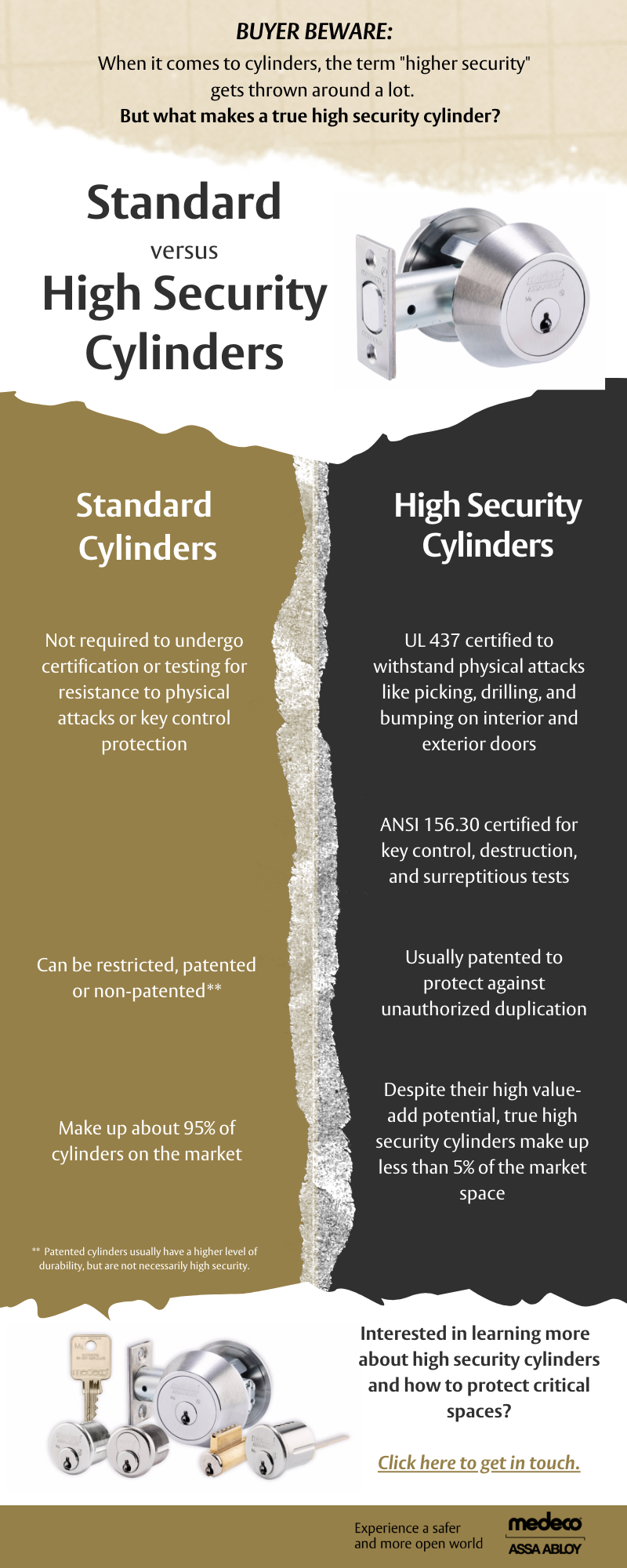What Makes a True High Security Lock Cylinder?
What makes a true high security cylinder? While many manufacturers claim their cylinders are high security, they don't always have the third-party certifications to back up those claims.

If your facility is like most, you have several spaces that require high security. For example, areas that house human resource records, data storage, chemicals, and other expensive or sensitive equipment. Is your facility properly protected?
How can you be certain that the lock cylinders you choose to protect high security areas containing sensitive documents and valuable equipment are truly designed for high security? Unfortunately, many manufacturers claim their cylinders are high security but do not have the third-party certifications to back up those claims.

Third-Party Tested to Withstand Physical Attacks
High security cylinders have been tested to meet or surpass UL 437 standards and are thus proven to withstand many forms of physical attack, including picking, sawing, prying and drilling.
For example, Medeco’s M4 cylinder, which is UL 437 listed, is machined of solid brass and includes strategically placed hardened-steel inserts to thwart drilling attacks. In addition to tumbler pins that lift and rotate, the M4 design includes four side pins: three finger pins and one lift pin, which must all interact with the sidebar to open, providing a high level of pick resistance.
BHMA (Builders Hardware Manufacturing Association) standard A156.30-2003, approved and adopted by ANSI (American National Standards Institute), was developed to provide specific guidance as to which products can be considered high security. M4 cylinders meet or exceed BHMA A156.30 criteria for strength, durability and protection against surreptitious entry.
Utility Patents Protect Against Unauthorized Key Duplication
The most robust high security locking systems are guarded by a utility patent. With a utility patent in place, only authorized individuals may duplicate keys – a fact that is documented in the key control agreement issued by the key manufacturer and signed by the designated locksmith and end user. It is illegal for another party to produce a key that will work in a patented lock. This agreement protects all parties involved and enables legal recourse if the agreement is violated.
So, to ensure your cylinders are truly high security, check to be sure they have met the requirements of UL 437 and A156.30-2004 standards and are protected by a utility patent.
Are you interested in learning more about high security cylinders and how to protect your most critical spaces? Fill out the form below to get in touch with our team.